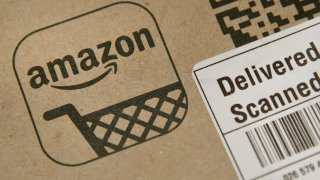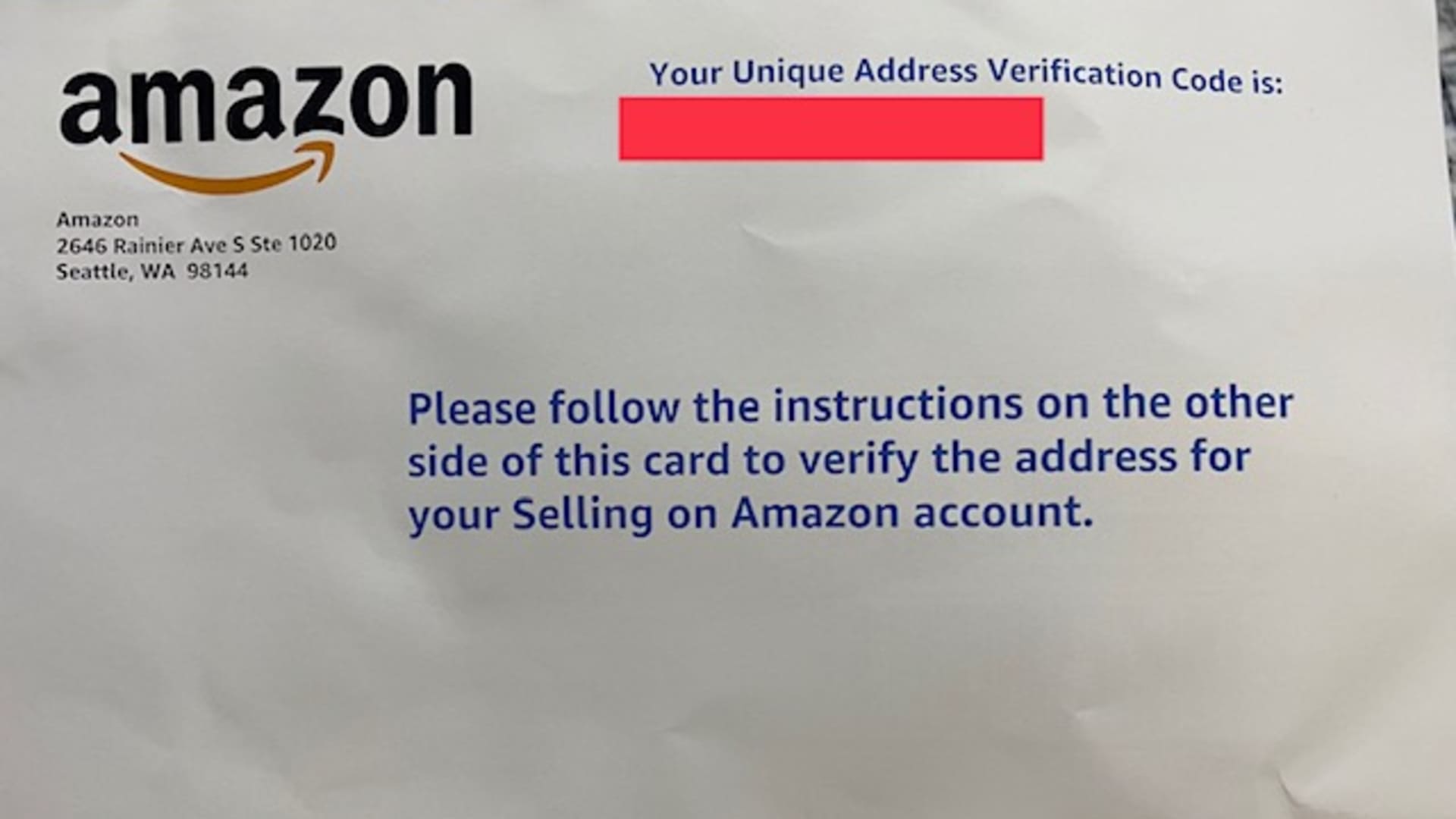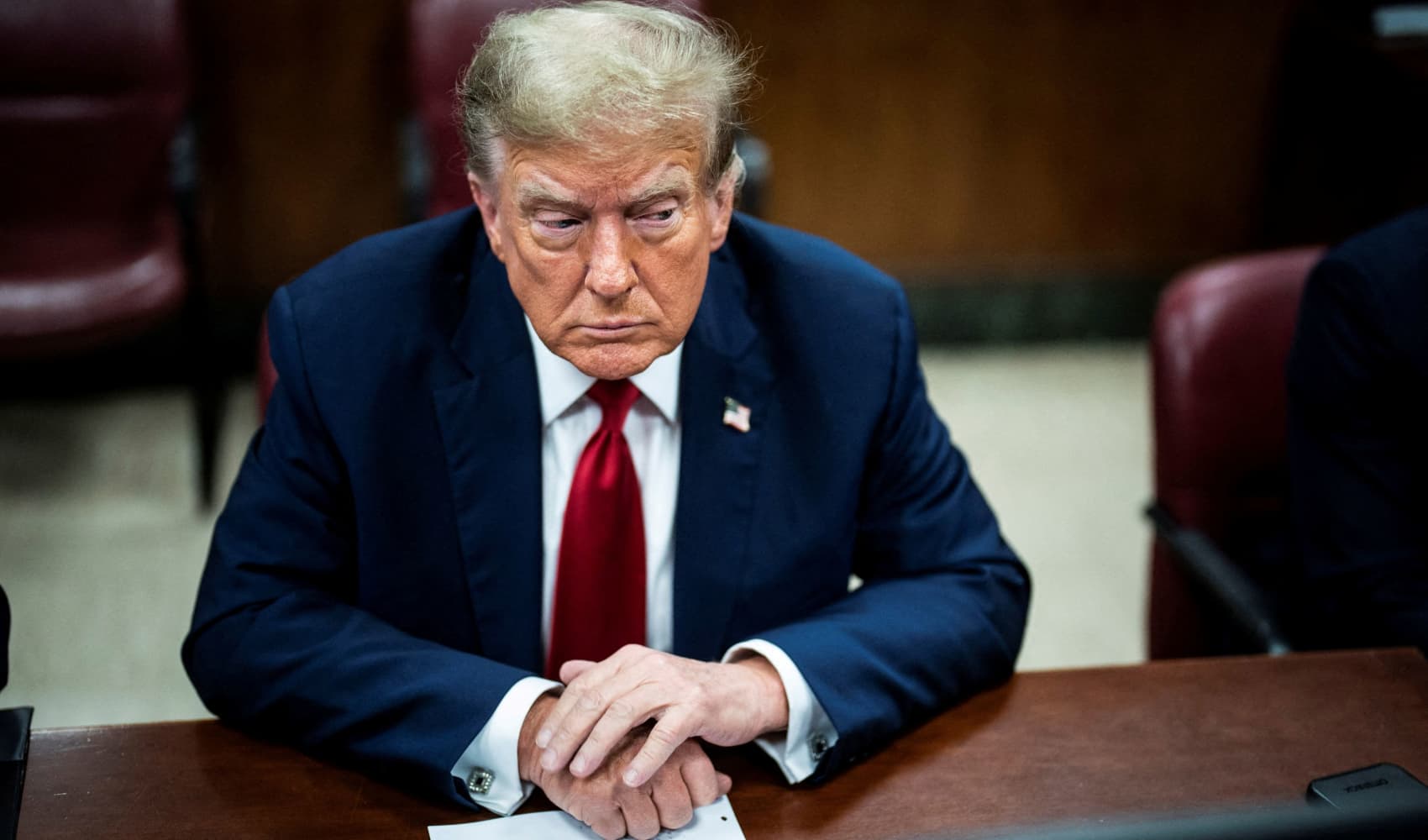
- Amazon has begun mailing third-party sellers a postcard to verify their business address.
- It could help Amazon weed out counterfeiters and other bad actors on its sprawling third-party marketplace.
- In September, Amazon started requiring merchants on its U.S. marketplace to publicly disclose their business name and address.
Amazon is using old-school snail mail to make sure the sellers on its marketplace really live where they say they do.
After requiring third-party sellers to make their business names and addresses public in September, Amazon is now making sure their addresses are authentic and accurate. To do this, the company began mailing postcards to third-party merchants who sell on its U.S. marketplace to verify their addresses, according to an email reviewed by CNBC.
"As part of our commitment to provide a safe and trustworthy shopping experience for our customers and selling partners, we need to verify the business address displayed on your Amazon.com seller profile page," the email says, adding that merchants won't be prevented from selling on the platform while their address is being verified.
Get South Florida local news, weather forecasts and entertainment stories to your inbox. Sign up for NBC South Florida newsletters.
Here's what the postcards look like:


Amazon confirmed to CNBC that it began testing the initiative with new sellers last year, then started including some existing sellers at the beginning of this year. The company said it now plans to expand the initiative further. Three third-party sellers told CNBC that Amazon informed them this week that they would soon receive a postcard seeking to verify their address.
Money Report
"We leverage a combination of advanced machine learning capabilities, robust vetting, and expert human investigators to protect our customers and selling partners from bad actors and bad products," an Amazon spokesperson said in a statement. "Once a seller is allowed to sell in our store, we continue to monitor their account and its behaviors for new risks.
"We are constantly innovating in this space to stay ahead of bad actors and their attempts to circumvent our controls," the spokesperson added.
How the verification process works
First, Amazon will contact a seller informing them that the company needs to verify their business address. Merchants then review and confirm their business address on an internal seller portal, called Seller Central. Once that's complete, Amazon sends out a postcard to sellers that arrives in a few days.
On the postcard is a verification code that sellers are instructed to enter on Seller Central, according to a copy of the postcard reviewed by CNBC. Sellers have 60 days to verify their address. If they fail to do so, Amazon said, it can withhold funds from sellers' accounts.
Amazon will block any accounts that prove to have an illegitimate address. And if a seller's postcard gets lost in the mail, Amazon will allow them to request a new one to be sent to their address.
Last fall, the company started requiring merchants on its U.S. marketplace to publicly disclose their business name and address in order to make it easier for consumers to vet these sellers and their products prior to purchase.
Amazon operates online marketplaces in more than a dozen regions, but its largest is in the U.S. As of late March, Amazon had more than 6 million third-party sellers worldwide, with more than half of them selling on Amazon in North America, according to Marketplace Pulse, an e-commerce research firm.
Before the new policy went into effect in September, consumers could click through to a seller's profile to review buyer feedback and view their satisfaction rating, as well as contact the seller with questions.
But there was no easy way to see where the seller is based or which legal entity is offering the product, unless consumers were shopping on Amazon marketplaces in Europe, Mexico and Japan, where sellers have long been required to display their business name and address, due to local laws.
As Amazon has grown to become one of the largest e-commerce players worldwide, it has built up a huge third-party marketplace made up of millions of businesses that hawk their wares. Third-party sales make up more than half of Amazon's revenue. However, the marketplace's sprawling scale has opened up the company to a host of issues, including the proliferation of counterfeit, unsafe and expired goods.
Listing seller information in the U.S., as well as verifying that it's accurate via the postcards, could be effective measures to help Amazon push more bad actors off the platform. Google also sends out postcards to verify addresses of businesses on Google Maps and other properties.
For example, it's become a common tactic for merchants to create multiple accounts in order to continue selling on the platform after they've been suspended by Amazon, which is in violation of Amazon's seller policies. If a seller operates dozens of accounts, they'd have to display a unique business address for each one and verify that the address is real.
"It's perhaps the only way to answer the question: 'Is the address you told us an address you have access to?'" said Juozas Kaziukenas, CEO and founder of Marketplace Pulse. "Otherwise a seller can enter any address, and there isn't a way to answer the same question, especially for international sellers. Amazon does require bank statements and other documents for new sellers with an address that matches what you submitted, but this is taking it further, and for old sellers."






